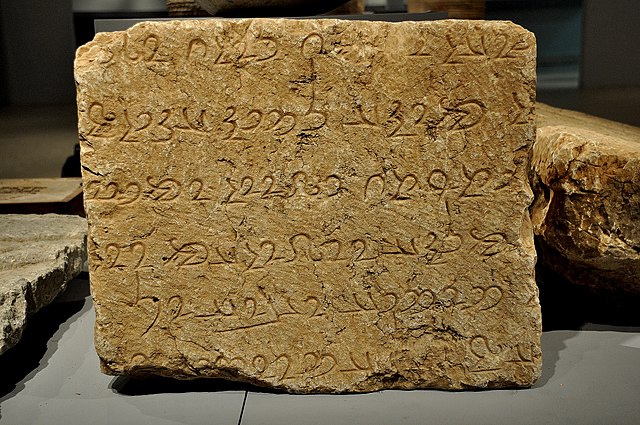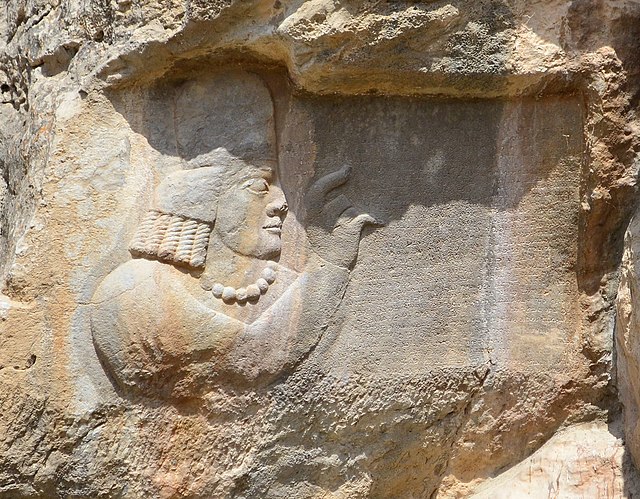Inscriptional Pahlavi is the earliest attested form of Pahlavi scripts, and is evident in clay fragments that have been dated to the reign of Mithridates I. Other early evidence includes the Pahlavi inscriptions of Parthian coins and rock inscriptions of Sasanian emperors and other notables, such as Kartir the High Priest.
Inscribed stone block from the Paikuli inscription
Inscriptional Pahlavi text from Shapur III at Taq-e Bostan, 4th century
Kartir's inscription at Naqsh-e Rajab
Sasanian relief with Inscriptional Pahlavi monogram ʾpr, which stands for abzūn farr, meaning "May his farr increase!"
The Paikuli inscription is a bilingual Parthian and Middle Persian text corpus which was inscribed on the stone blocks of the walls of Paikuli tower; the latter is located in what is now southern part of Iraqi Kurdistan near modern-day Barkal village, Sulaymaniyah Governorate, Iraq. These inscribed stone blocks are now in the Sulaymaniyah Museum; the field only contains the stones that were used in the construction of the tower. It was set up as a monument to victory, and tells how and why the Sasanian emperor Narseh ousted his grandnephew from power.
Paikuli Tower.
Stone block, D3, with Inscriptional Pahlavi (middle Persian) wrtitings
Recently discovered C2 inscribed stone block, Middle Persian script, from the Sassanian Paikuli Tower, Sulaymaniyah Museum
Recently discovered c12 inscribed stone block, Parthian script, from the Sassanian Paikuli Tower, Sulaymaniyah Museum







